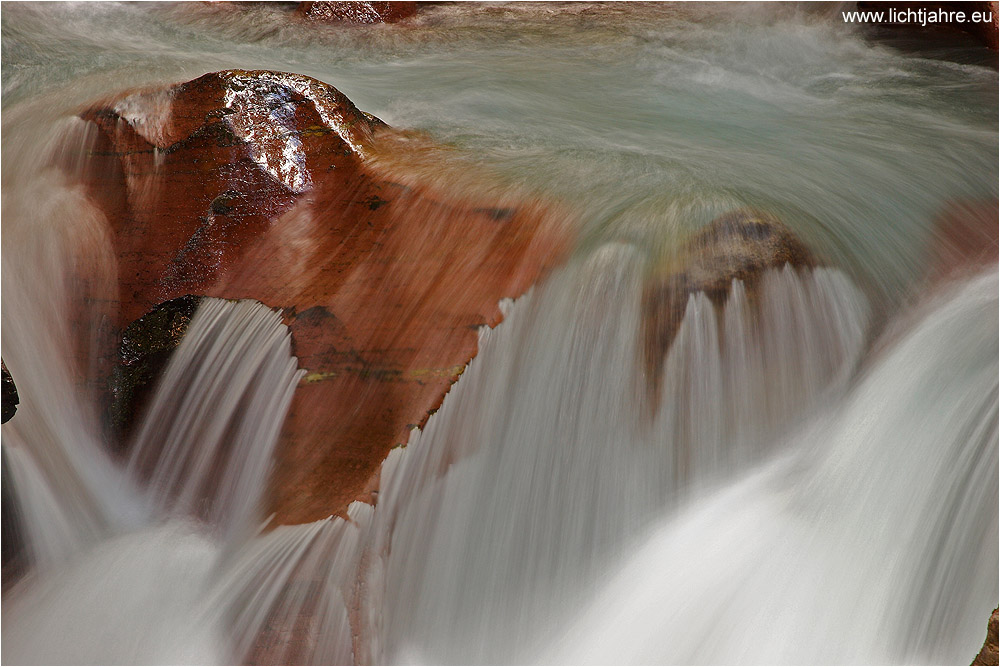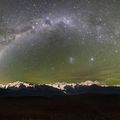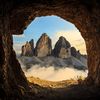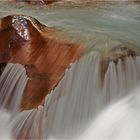No Oceans, No Continents
Die Entstehung von Kontinenten ermöglichte erst die Evolution der Pflanzen und Landlebewesen. Die relativ leichten Granite geringer Dichte, die die Kontinente bilden, schwimmen auf der schweren Basaltkruste und erheben sich im Mittel 125 m über die Meeresoberfläche. 15% des Festlandes liegen sogar oberhalb von 2000 m. Die dichte und schwere ozeanische Basaltkruste liegt dagegen im Mittel 4 km unter dem Meeresspiegel und erreicht in den ozeanischen Gräben bis zu 11 km Tiefe. Bedeckt wird sie von einer Sedimentauflast, die mit zunehmendem Alter wächst. Spätestens nach 200 Millionen Jahren wird diese Kruste jedoch bei der Subduktion zerstört. Kontinente werden dagegen nicht subduziert, was ihr enormes Alter erklärt. Die Masse aller Kontinente bildet jedoch nur 0.6% der Erdmasse. Die chemische Zusammen-setzung der kontinentalen Kruste spiegelt sich am Besten in Sedimentgesteinen verfestigter Schlämme wider, abgesehen vom Natrium und Kalzium, die im Meerwasser gelöst bleiben.
August 2008
Canon 20D, Canon EF-S 10-22mm, f/16, 4 sec, ISO 100, Stativ
Mehr Information unter
www.lichtjahre.eu
Where Geoscience Meets Art - Die Ästhetik der Geowissenschaft
Ein Projekt, das die Schönheit der Natur dokumentiert
und zum Verständnis der Geowissenschaften beiträgt
----------------------------------------------------------------------------------------
Continental growth was the prerequisite for the evolution of life beyond the hydrosphere. The lightweight and buoyant granites of the continents are floating on the heavy basaltic crust and hence rise to an average of about 400 ft (125 m) above sea level. 15% of the continental area rise to elevations beyond 6500 ft (2000 m). In contrast, the dense and heavy oceanic basalt crust is found 13.000 ft (4 km) below the sea level on average and reaches depths of 36.000 ft (11 km) in the deep sea trenches. The superimposed sediment load of the ocean floor grows with time. However, no ocean crust is older than 200 millionen years due its destruction in the subduction process below the continents. Due to their buoyancy continents cannot be subducted what explains their enormous age of up to 4 billion years. Being so lightweight all today's continents explain only 0.6% of Earth’s mass. Despite sodium and calcium, solved in the sea water, the average chemical composition of the continental crust manifests in fossilized ocean sediments washed into the oceans by rivers and streams.
August 2008
Canon 20D, Canon EF-S 10-22mm, f/16, 4 sec, ISO 100, tripod
More information:
www.lichtjahre.eu
Where Geoscience Meets Art
A project that documents Nature's beauty
and enhances understanding of geosciences













JWG-Photography 22/02/2010 12:57
Fortsetzun: Danke für Deine Beschreibungen unter denFotos. Jochen
JWG-Photography 22/02/2010 12:56
S e h r s c h ö n e s Motiv und Aufnahme. lG JochenStemmer Thomas 06/10/2009 21:51
Ausgesprochen gute Aufnahme.LG der Stemmer